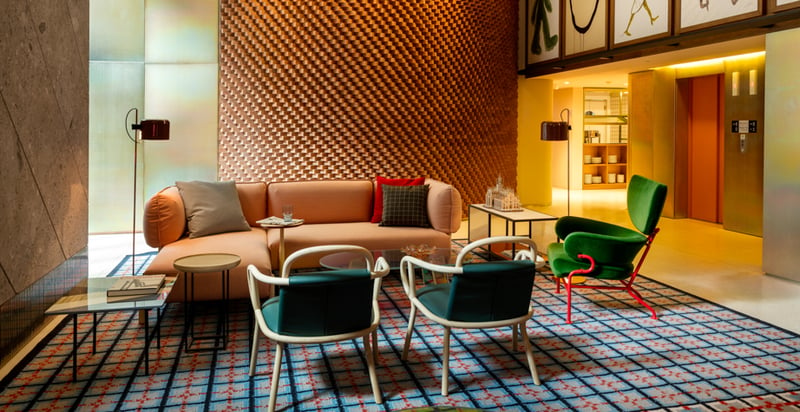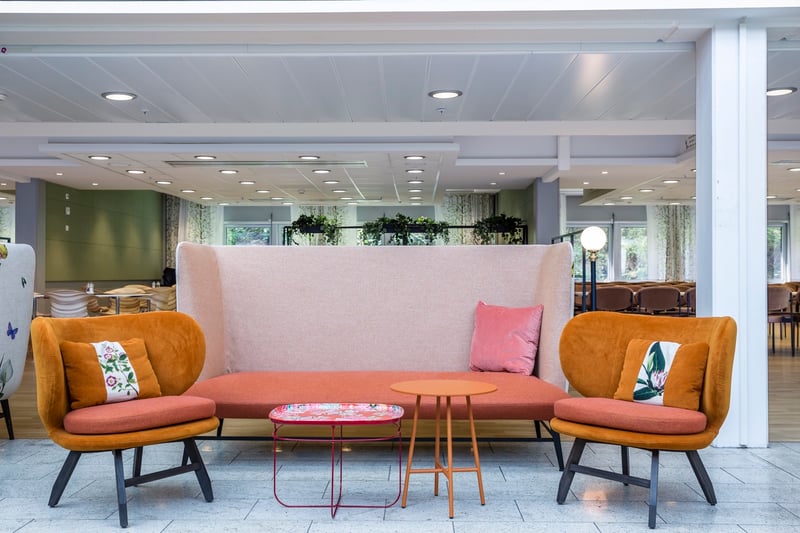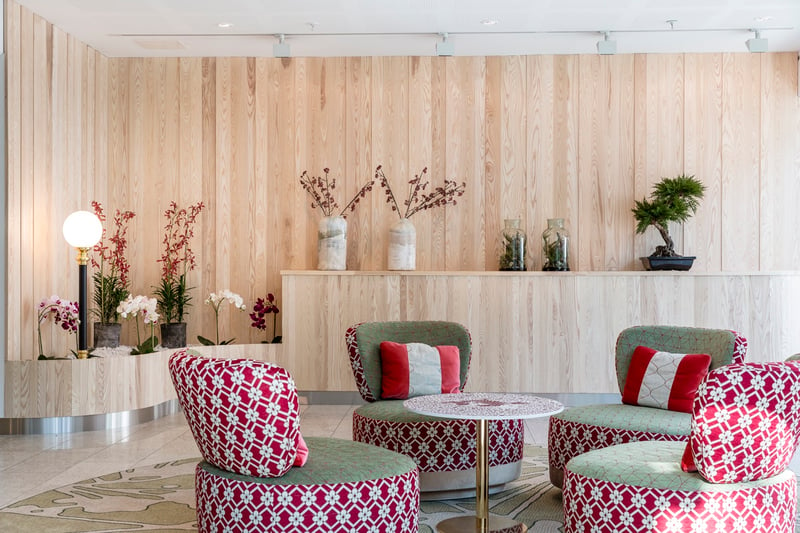According to research by McKinsey, nearly 40% of employees reported being somewhat likely to quit their jobs in the next three to six months. Additionally, 56% of employers are experiencing higher voluntary turnovers compared to previous years, 64% of whom are expecting the situation to worsen in the next 6 months. Employee turnover costs in the UK are at a high of over £25,000 in productivity losses with a replacement period of up to 28 weeks per employee.
There have been extensive cross-sector conversations around the role of office design in talent retention, particularly in the post-Covid era. With office design tackling challenges in creating more productive work environments, improving workplace experiences and most importantly, developing a suitable company culture for employee retention, it has become an incredibly essential long-term solution for companies seeking to attract and retain top talents.
How Can We Create a Better Sense of Belonging for Employees through Office Design?
-
Designing Social Spaces for In-Person Interactions
Recent research has shown that the number one reason why employees come to the office post-Covid is for purposeful interactions with their team. That said, the role of office design in bringing people together to collaborate and build productive relationships with their colleagues cannot be overlooked. It goes beyond just creating social spaces and silo team-based units to developing different furniture typologies that promote an open desk policy and a sense of everyone working together towards the same goal.
“Most clients know that they have to reimagine the workspace completely. Pre-Covid, so many clients were shoving breakout spaces under some stairs or on a corridor. It is currently a much more holistic approach. It has almost flipped upside down. Breakout spaces now come first. Items like desks and workstations are instead put in quite intentional areas and in smaller groups, rather than being the whole space with everything else tucked in,” says Susan Hann, the Head of Sales and Marketing at JPA Workspaces.
-
Designing Inclusive Spaces for Different Generations
There is a big shift in the younger generations compared to the older generations in the workplace when it comes to work preferences. The incoming younger generations are looking for faster connection and a sense of belonging in the workplace, which can only be provided by the people with a lot of legacy and experience with the help of good office design. Adequacy of inclusivity has been mentioned as one of the top driving factors for employee retention.

People in higher-ranking roles choosing to use larger tables in communal areas enhances accessibility, fostering increased interactions among staff members from various generations.. An intentionally designed office design will thus inevitably cater to the different needs of all employees and to different styles of working.
-
Personalisation of Workspaces
While previously offices adopted a one-size-fits-all design with fixed furniture, workplaces are evolving to allow for more personalisation. Giving employees the choice of having a unique workstation can allow them to feel a bit more welcomed, therefore attracting and retaining talent. From the selection of materials and colour choices to height-adjustable furniture, monitor arms, desk lamps and custom shelving, making office spaces more comfortable and homely has a great impact on the workplace experience. More and more, manufacturers are also bringing out flexible options for personalization of office products.
-
Shared Knowledge and Experiences
33% of employees in the UK go to the office to be part of a community. Being able to share in-person work experiences with colleagues plays an integral part in that. Common spaces for bigger teams now play a more central, high-profile role in creating that sense of community.

Furniture typologies and layouts go a long way in encouraging the sharing of knowledge and experiences. Tiered seating for tens or hundreds of people can be developed for reaching bigger audiences such as in company briefings, departmental updates or supplier meetings to keep everyone up to date with the relevant company operations.
-
Workplace Flexibility and Adaptability
Employees are continuously demanding flexibility in office spaces. Employers have to make coming to the office more worthwhile by providing the same level of comfort that employees have at home, but with more productive and collaborative benefits. The office experience now has to compete with all the other different places that employees prefer to work in.
Workspaces have consequently grown more adaptable, with the flexibility to cater for hundreds of people where necessary, but also to half a dozen different-sized groups at other times. Giving employees the flexibility to adapt the workspace for a club approach or town hall experiences can give them a holistic sense of being part of something bigger than their individual selves.
-
Sustainability
Sustainability is fast becoming an important consideration in talent attraction. An increasing number of professionals are leaning towards joining companies that demonstrate a robust commitment to environmental and social responsibility. Companies are therefore aiming to drive projects that are carbon neutral, working with designers that spend time and effort ensuring, at a product level, that their furniture solutions are reusable and planet conscious. They have to demonstrate to their talents that their workplace practices are sensitive to the concept of climate change and thus align with the individual principles of their teams.
-
Caring for Employees through the Workspace
Employees are far more engaged with an organisation if they show that they care for their people through their spaces. We all consider the overall atmosphere of a space and are naturally drawn towards comfort and beauty.

Any business that cannot communicate and reflect their brand values and mission in the design of their spaces, demonstrates a disconnect. Employees would generally expect a quirky start-up to reflect that brand personality in their office space as compared to a legal firm for instance.
-
Challenges in Designing the Office for Talent Retention
The main challenge in the transition process for employers, commercial occupiers, and architects when designing the office for talent retention is often the time element. For a client who has been in an office space for around 10 years and suddenly needs to renovate and refurbish, it takes a while to see the transition through from start to finish. Even though people do want change and to adopt spaces that offer more flexibility, it usually is quite a difficult kind of transition for employees.
The UCL Marshgate, for example, developed brand new courses to help solve some of the world's most complex problems and therefore needed to attract the best students in the world to be part of their learning environment. It took over 15 years and a collaborative approach from different departments and faculties to develop the idea of the building and the spaces they wanted. They have incorporated different collaborative spaces such as public spaces at their ground floor level, a big café area across the massive atrium in the building, as well as project working spaces where teams can come together on different levels.
It is not all just about physical change. There are several organisational and psychological changes involved. There are instances where offices are redesigned, but employees fail to interact with their new spaces and only end up utilising half of the office. This could be because they are stuck in their old patterns and it takes a while to make behavioural changes.
-
Easing the Transition
In case of a major transition, educating the clients and the users on how to use the new furniture and spaces is fundamental. Having a help desk, discussing why the new scheme is better alongside the design team and showing people practically how to work in the new space can make the transition easier.
-
JPA Workspaces in Action
At JPA Workspaces, we aim to build lasting relationships with our clients through exemplary customer service. In addition to offering unparalleled workplace solutions that ensure the attraction and retention of top talent, we offer support after installation, revisiting our clients quarterly to ensure they are happy with the changes. We continuously work with the client to modify the space until it perfectly meets the company's needs.
We are also able to offer sustainable office solutions and analyse certain sets of data around environmental and social themes that are important to our clients, including their carbon footprint. As such, they can attract talent by presenting this output to their client base and potential employees with shared values. Contact us today to consult on all the workplace solutions we can offer to help your company attract and retain talent.
